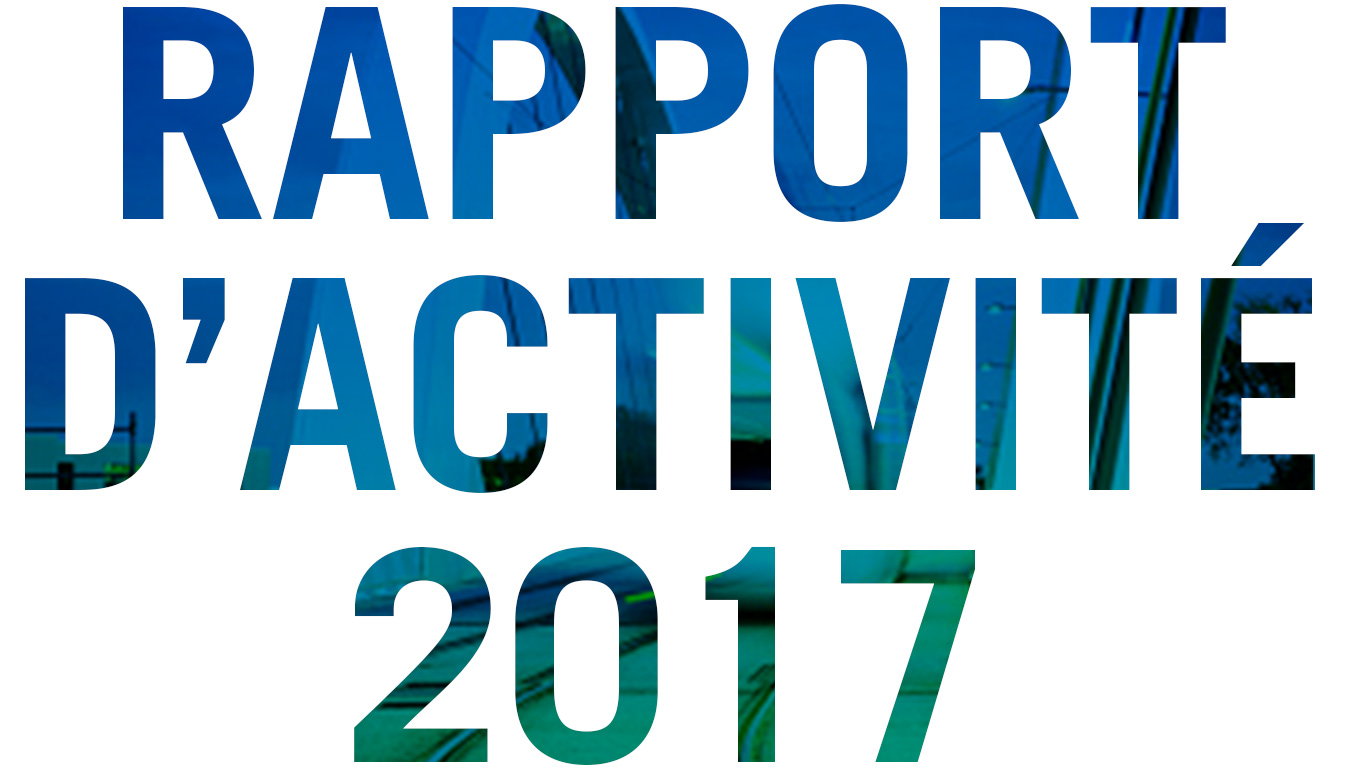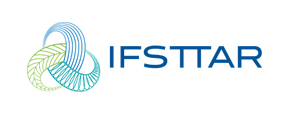Structuring research activities
Departments
The department MAST - Materials and structures
MAST Laboratories
- LAMES - Laboratory for Modelling, Experimentation and Survey of transport infrastructures
- CPDM - Division for Material Physicochemistry
- EMGCU - Expérimentation et modélisation pour le génie civil et urbain
- FM2D - Mix-design, Microstructure, Modelling and Durability of Building Materials Laboratory
- GPEM - Aggregates & Materials Processing Laboratory
- MIT - Advanced Materials for Transportation Infrastructure Laboratory
- NAVIER - UMR Ecole des ponts ParisTech / Centre national de la recherche scientifique / Ifsttar
The department GERS - Geotechnical engineering, Environment, Natural hazards and Earth sciences Department
GERS Laboratories
EE - Water and Environment Laboratory
GEOEND - Assessment and Imaging Laboratory
GMG - Geomaterials and Geotechnical Modeling
ISTERRE - Institute of Earth Sciences
NAVIER - UMR Ecole des ponts ParisTech / Centre national de la recherche scientifique / Ifsttar
SRO - Soils, Rocks and Geotechnical Structures Laboratory
SV - Earthquakes and Vibrations
RRO - Rockfall hazards and design of geotechnical structures
The department COSYS - Components and systems
COSYS Laboratories
ESTAS - Evaluation of Automated Transport Systems and their Safety Laboratory
GRETTIA - Engineering of Surface Transportation networks and Advanced Computing Laboratory
LÉOST - Laboratory on Electronics, Waves and Signal Processing for Transport
LEPSIS - Laboratory for road Operations, Perception, Simulators and Simulations
LICIT - Transport and Traffic Engineering Laboratory
LISIS - Laboratory on Instrumentation, Scientific Informatics and Simulation
LIVIC - Laboratory for Vehicle Infrastructure Driver Interactions
TEMA - Technologies pour une Electro-Mobilité Avancée
MACSI - Materials Assemblies Composites for Intelligent Structures Laboratory
SII - Structures and Instrumentation Laboratory
The department TS2 - Transport, health, safety
TS2 Laboratories
LBA - Laboratory of Biomechanics and Application
LBMC - Biomechanics and Impact Mechanics Laboratory
LESCOT - Laboratory Ergonomics and Cognitive Sciences applied to Transport
LMA - Laboratory of Accident Mechanism Analysis
UMRESTTE - Epidemiological Research and Surveillance Unit in Transport, Occupation and Environment
Simu & Moto - Simulateurs & Motocyclettes
The department AME - Planning, Mobilities and Environment
AME Laboraties
DEST - Economic and Social Dynamics of Transport Laboratory
EASE - Environment, Planning, Safety and Eco-design
GÉOLOC - Geopositioning
LPC - Mobility and Behavior Psychology Laborator
LTE - Transport and Environment Laboratory
LVMT - City, Mobility and Transport Laboratory
SPLOTT - Production Systems, Logistics, Transport Organization and Work
UMRAE - Environmental Acoustics Laboratory
In order to meet societal challenges, IFSTTAR continues to structure its research activities with coordination as a priority.
Internal changes in its research structures are an integral part of the life of a research institute to better adapt to scientific issues while taking into account the ambitions and desires of the staff working in the laboratories.
An emerging Simu&Moto research team (Simulators & Motorcycles) was created in 2017 within the TS2 department with as its main topic the simulation of motorised two-wheeler driving. The team is currently concentrating on formalising its scientific project, which could eventually be integrated within an existing laboratory or jointly-managed research unit.
The GEOLOC laboratory which conducts research and expert appraisals on geolocation methods and systems has migrated from the COSYS department to the AME department. It has upgraded its scientific project to respond not only to the technological and societal challenges linked to the digital transition and greater connectivity for all transport stakeholders, but also to accommodate changes in mobility practices and vehicles. It is thus moving closer to the uses of mobility.
Within the MAST department, a new laboratory EMGCU (Testing and Modelling for Civil and Urban Engineering) was set up at the start of 2018 as a result of the merger of two laboratories covering similar scientific themes: EMMS (Experimental and Numerical Analysis of Materials and Structures) and SDOA (Safety and Durability of Structures). This merger gave rise to discussions held throughout 2017 in order to finalise the scientific project for the new single laboratory. EMMGU focuses its activity on engineering structures and all aspects related to their aging: the development of diseases and understanding of the processes that lead to disorders (cracking, etc.), estimating their lifespan and managing their lifecycle optimally.
Cooperation with external partners
Cooperation with external partners also helps to structure research activities. It is encouraged where it is scientifically relevant and speeds up the creation of teams that possess the necessary skills to tackle emerging scientific problems. IFSTTAR creates various forms of partnership. In 2017, a Joint Research Team (ERC) was set up in collaboration with Agrocampus Ouest bringing together the Water and Environment Laboratory (EE) in Nantes (GERS Department) and an Angers-based laboratory, the Physical Environment of Horticultural Plants (EPHOR). This ERC will go under the name of VESPA (City Water Soil Plants Atmosphere), and is the first research team to deal with plants and soils in urban areas. In addition, a ninth jointly-managed research unit was created with CEREMA in the area of environmental acoustics, confirming long-standing collaborations between the teams. A project for a UMR was also presented for evaluation by HCERES in the field of psychology. This UMR would be formed by a merger between the Mobility and Behaviour Psychology laboratory (LPC, AME department) and the Laboratoire Adaptations Travail-Individu (LATI) at the University of Paris Descartes.
The launch of four unifying projects
The launch of four unifying projects aims to encourage cross-disciplinary and interdisciplinary research within the Institute in the laboratories of its five departments. It must also make IFSTTAR's presence felt on current issues with high stakes for society.
![[Translate to Anglais:] Projets Fédérateurs [Translate to Anglais:] Projets Fédérateurs_img](/fileadmin/_processed_/9/0/csm_projetsFederateurs_730a946a0d.jpg)
The Ville 2050 unifying project focuses on the design of tomorrow's sustainable and "liveable" cities, in particular in the context of climate change and the energy transition and in order to meet the targets set for 2050 to limit the environmental impacts of cities. How can we work towards mobility for all, towards a city that consumes little energy and resources and has a small environmental footprint, which at the same time is adaptable and resilient?
The Mobility and Digital Transitions unifying project focuses on the ongoing digital transitions that have already had major consequences in the field of mobility and will continue to do so in the future. It deals with the emergence of digital technologies for connected mobility, aiming to show how it is possible to study mobility from the digital perspective and consider how stakeholders and areas are addressing the opportunities opened up digital technology.
The Virtual traveller unifying project aims to simulate human behaviour in order to predict the impacts of tomorrow's mobility. The simulations it performs take in new traffic regulations, increasingly delegated driving aids and autonomous vehicles, but also individuals' reactions and behaviour in the face of these new vehicles and facilities.
The Infrastructure for the energy transition energy unifying project deals with adapting infrastructure to climate change, extending its lifespan, monitoring it and making it more "intelligent", reducing maintenance costs and preserving assets.
In 2017, kick-off seminars were held for each of these projects. These seminars brought together a large number of participants and enabled the various teams to discuss their work and consider new common approaches. They are led by teams of three researchers and the progress of the work is consolidated by an operational committee.
In addition to unifying projects, the scientific directorate encourages important research collaborations with partners, network leadership and targeted initiatives by young researchers or emerging research topics. In 2017, 11 targeted initiatives, 3 research collaborations and 1 networking action were launched. That same year, 4 network leadership initiatives, 5 targeted initiatives and 7 research collaborations were concluded with 5 seminars to present the work.

